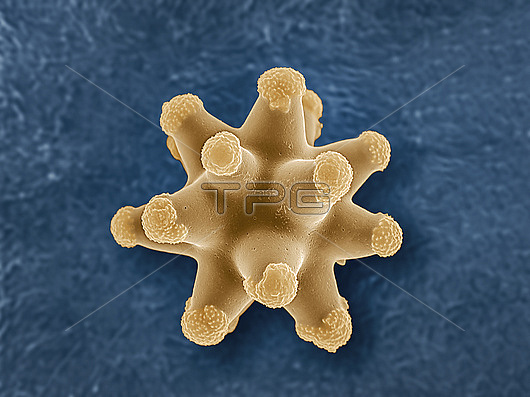
Coloured scanning electron micrograph (SEM) of a silica-based spicule from a sponge. Sponges are primitive aquatic organisms that filter nutrients from the water. They are considered one of the most ancient and simple forms of life in aquatic environments. Sponges use a filtration system to gather nutrients from the surrounding water. Their bodies are made up of loosely organized cells, which gain structural integrity from spicules and fibres primarily made of silica, and in some cases, calcium carbonate. The spicule shown here has a euaster form, characterised by radial symmetry where extensions emanate from a central hub. Spicules play a crucial role in the sponges structural support and defence mechanisms against predators. Magnification: x2300 when printed 10 centimetres wide.
| px | px | dpi | = | cm | x | cm | = | MB |
Details
Creative#:
TOP29874917
Source:
達志影像
Authorization Type:
RM
Release Information:
須由TPG 完整授權
Model Release:
N/A
Property Release:
N/A
Right to Privacy:
No
Same folder images:

 Loading
Loading